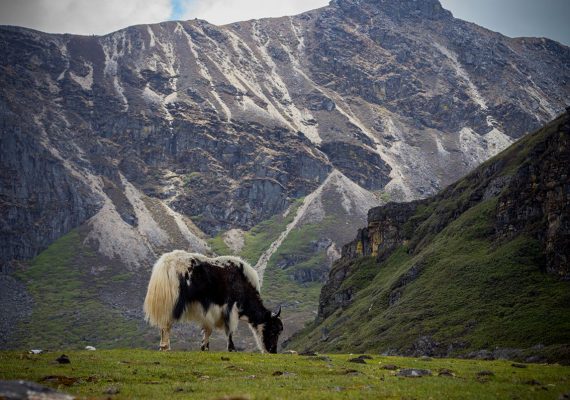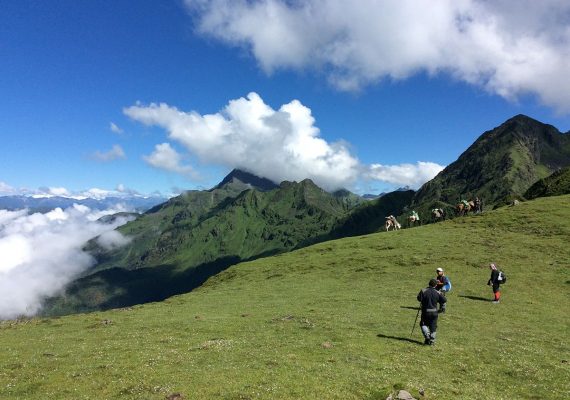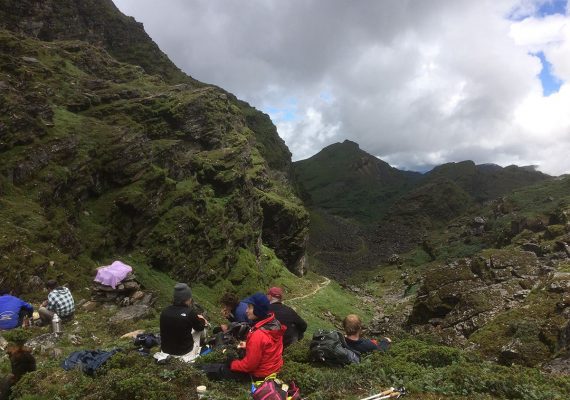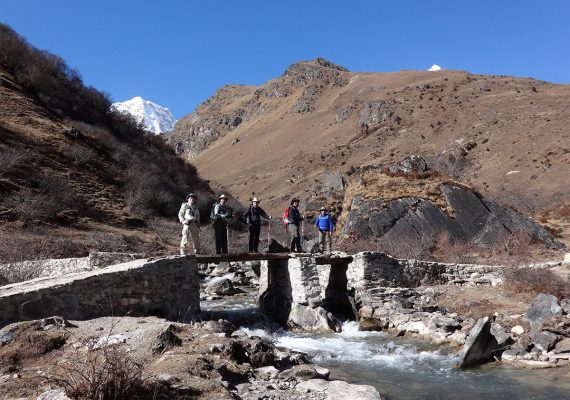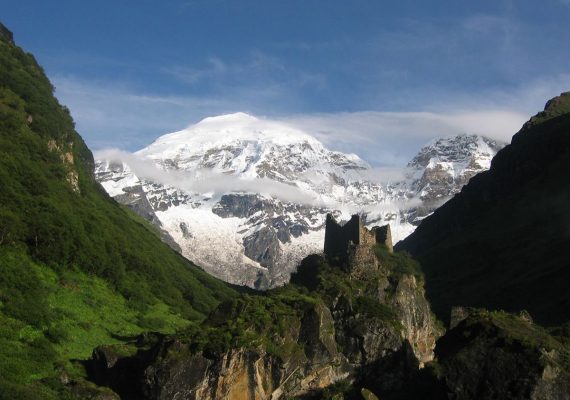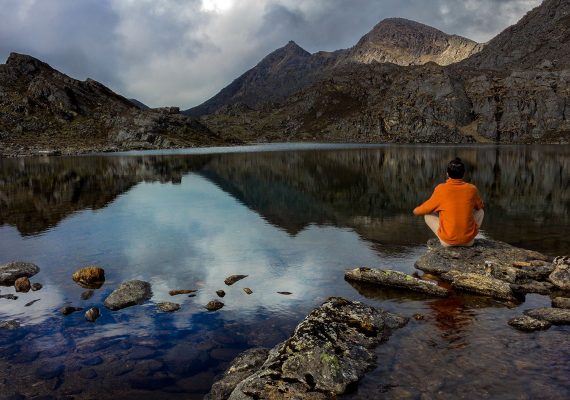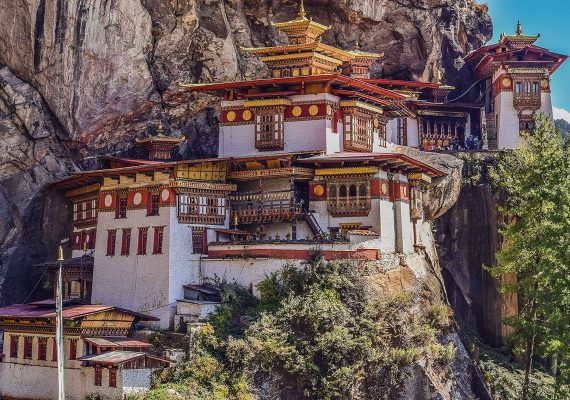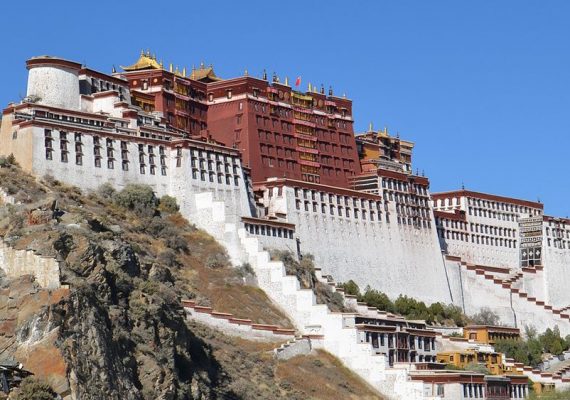Menu
Menu
Tour Details
The trek follows the gravel road passing through the village. The wide trail climbs through blue pine and fir forest to a mani wall. It is then a long, but not steep, climb through forests to a camping place in a large pasture just below Jili La, marked by a cairn at 3560m…
Arrive at Paro International Airport from Delhi, Calcutta, Kathmandu or Bangkok. Paro is situated in a beautiful valley at 2280 metres and is a fitting introduction to this charming kingdom. Your guide will meet you and take you to your hotel. There should be time for a stroll around Paro town before lunch. In the afternoon you can visit the impressive Paro Rinpung Dzong, one of the finest examples of Bhutanese architecture. Nearby you can also visit the 7th century Kyichu Lhakhang, a temple of historical significance and one of the most sacred shrines in Bhutan. Overnight in Paro.
Take a day walk to the ‘Tiger's Nest’, the sacred Taktshang monastery which clings to the rock face 900 metres above the valley floor. Guru Rinpoche is said to have flown to the site riding on a tigress. He subsequently meditated here for three months. It is one of Bhutan’s most holy sites and draws pilgrims not only from Bhutan but also from neighbouring Buddhist countries. You can have lunch at the Taktshang cafeteria from where you get a spectacular view of the monastery. On the way back you may be interested to visit a manor house turned museum in a local village. The house dates from the 17th Century and the museum is designed to showcase the culture of medieval rural Bhutan. Afterwards you may also have time to visit Dumtse Lhakhang, a temple built by Thangtong Gyalpo, the iron bridge builder. Overnight in Paro.
This evening you can sort out your luggage for the trek. Anything you don’t need to carry with you will be driven safely to Thimphu to await your arrival. Overnight in Paro.
The first day of the trek is a long slow climb; the trek follows the gravel road passing through the village. The wide trail climbs through blue pine and fir forest to a mani wall. It is then a long, but not steep, climb through forests to a camping place in a large pasture just below Jili La, marked by a cairn at 3560m. Overnight in camp
Today we will take a detour from the main trek path, avoiding the steep climbs, by descending towards the south-east through silver fir, pine, rhododendron and hemlock forest. The route takes you through the forest and then past a couple of houses to camp nearby a small river at about 3000 metres. We can also visit Tsalu Ney, a small 14th century temple, where the Guru Rinpoche is said to have meditated. Overnight in camp.
Today we continue with our detour, upwards to Pumo La at about 3400 metres. About two hours after the pass we will reach Phajoding at 3750 metres where we will camp. Numerous meditation centres and temples are scattered across the hillside and the large buildings of Phajoding monastery are just below the campsite. Overnight in camp.
The final day’s trail to Thimphu descends through blue pine forests (2 to 3 hours). In the afternoon you will be free to relax and wander round town, soaking in the atmosphere of this magical capital with its busy shops and bazaars and photogenic citizens in national dress. You could also visit the weekly market. Overnight in Thimphu.
Thimphu sightseeing. We will visit the weekly market, the revered Memorial Chorten, the National Library and the School of Traditional Arts. You could visit Changangkha temple, perched on the hilltop overlooking the town. Devotees flock throughout the day to circumambulate and turn the prayer wheels. The temple also contains beautiful wall paintings and hundreds of religious scriptures written in gold. In the afternoon you can take in more of the sights and culture of the capital, with the option of a trip to Simtokha Dzong (one of the oldest fortresses in Bhutan, dating from 1629 AD). If you prefer to stay closer to town you could visit the huge statue of Buddha Dordenma, which commands a tremendous view of Thimphu valley. The huge 3-storey throne holds several chapels and the body itself is filled with 125,000 smaller statues of Buddha. You can also visit the Takin Reserve showcasing the unique national animal, the Takin, browse the striking collection of intricate textiles at the National Textile Museum or visit the Folk Heritage Museum. If you would like to view or buy Bhutanese handicrafts you may like to visit the new market opposite Taj Tashi hotel which has an array of stalls run by local handicraft shops selling purely home made articles with no imports. Tell your guide what takes your interest. Overnight in Thimpu.
Early in the morning your guide will accompany you to the airport to see you off onto your flight and wish you Tashi Delek (goodbye and good luck)
